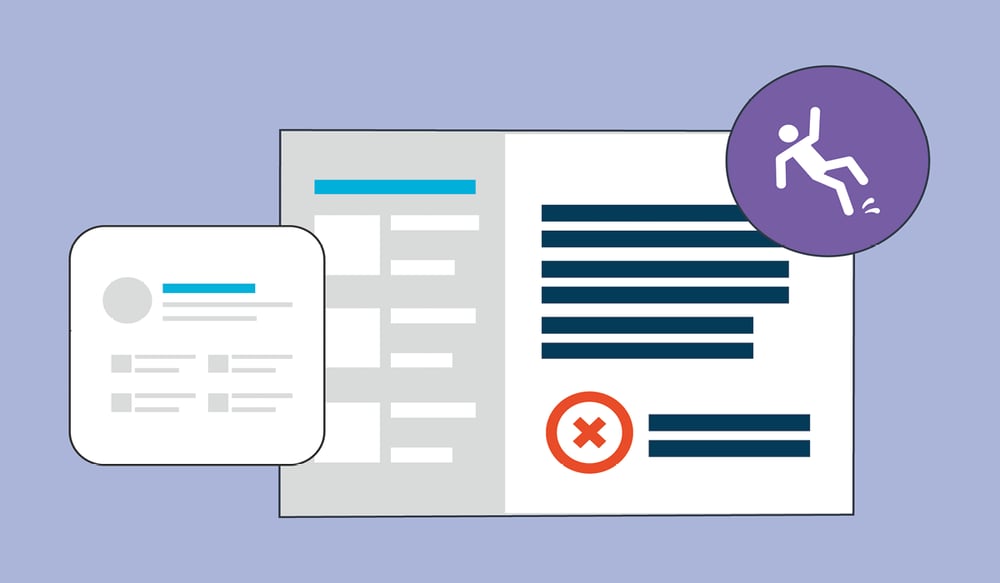What type of incidents take place in healthcare

Table of contents
A healthcare incident is an unintended or unexpected event that harmed a patient or caregiver—or has the potential to harm them. Incidents or errors occur for various reasons or root causes, such as system design flaws, lack of administrative oversight, poor training, digression from protocols, miscommunication, and more. Some incidents are preventable, which means there are types of incidents in healthcare that, when properly evaluated, can ultimately contribute to better quality care and help reduce harm.
The statistics are striking: Globally, four in 10 adults have experience with medical errors, either personally or in the care of someone close to them, according to the Institute for Healthcare Improvement. According to the World Health Organization, the occurrence of adverse events due to unsafe care is likely one of the 10 leading causes of death and disability in the world.
What are critical incidents in healthcare, and what causes them?<?
Today, there’s a growing understanding that often, multiple system factors cause incidents or errors. As a result, documenting and analyzing them for cause is paramount, providing hospitals and healthcare organizations with valuable lessons about how to improve caregiver and patient safety.
Types of health and patient safety incident categoriesMany health and patient safety incidents can be categorized into six groups: 1. Incidents related to administrative issues or planning include:
2. Incidents related to patient examination include:
3. Incidents related to the treatment of the patient include:
4. Incidents related to the dispense of medication include:
5. Incidents related to internal communication include:
6. Incidents related to healthcare workers include:
|
Examples of incidents in healthcare
Unfortunately, one doesn’t need to look far to find examples of incidents in healthcare. That’s because the industry is incredibly complex and fast-paced. These three examples show how honest mistakes can easily be made:
For example, there could be a mix-up of patient data when two patients have the same first and last names. Or, consider a patient who has an allergy to penicillin. If a provider views the wrong patient—one without any allergies—and then proceeds to administer penicillin to treat the patient’s pneumonia, the patient may have an allergic reaction. Incomplete data and duplicate records contribute greatly to this problem.
- Another example of an incident in healthcare could be caused by something as simple as not following established clinical protocols. For example, if a physician doesn’t properly wash their hands before suturing a wound, the wound could become infected.
- A patient could develop a decubitus ulcer while in the hospital because the nursing staff didn’t tend to them in a timely manner.
- Here’s another example: A patient’s breast biopsy results are delayed or they couldn’t schedule an appointment with their primary care physician in a timely manner, leading to a progression of their cancer that could have otherwise potentially been avoided.
-
Additional examples of incidents in healthcare
- Hospital caregivers can be harmed, too. For example, a patient may become aggressive, leading to a caregiver injury. Or a caregiver may accidentally stick themselves with a used needle, thus exposing themselves to a patient’s blood.
What is the most commonly reported incident?
Medication-related incidents are the most commonly reported incidents in healthcare. This includes administering the wrong dose, giving medication to the wrong patient, or omitting the dose.
For example, a nurse may scan a medication barcode, get distracted, and then grab the wrong bottle and administer the wrong medication. Or, the wrong dose may be administered because a physician accidentally transposed two numbers when prescribing it. Another example: A patient has a heart attack because they didn’t receive their blood pressure medication on time, due to the emergency department becoming inundated following a mass casualty incident.
Incidents give insight into patient safety risks
Learning why incidents occur can help organizations make improvements to prevent them from happening again. But first, the healthcare system must prioritize incident reporting by providers, staff, and patients. In fact, risk management and patient safety rely on healthcare’s collective:
- Willingness to report (near) incidents.
- Ability to learn from mistakes.
- Efforts to enact necessary changes.
- Put safeguards in place to prevent medical errors, injuries, patient safety mishaps, and more.
Even when there is a system in place to log incident reports and follow through on them, and healthcare incidents still occur, it doesn’t necessarily mean that providers are unqualified or have poor intentions. It means there’s room for improvement and opportunities to create a safer healthcare environment for all participants.
Are there incident severity levels?
The World Health Organization (WHO) classifies healthcare incidents according to the levels of severity (i.e., mild, moderate, severe, or death) based on the severity of the symptoms or loss of function, the duration of the symptoms, and/or the interventions required as a result of the incident. Organizations may also choose to classify the severity of healthcare incidents based on an increased length of stay as well as the psychological stress associated with a patient-safety incident that can often have a greater impact than any physical harm.
There are also additional types of patient safety incidents identified by the Joint Commission, that some organizations may track:
- Near miss (i.e., a healthcare incident that did not reach the patient or caregiver and therefore did not result in any harm).
- No-harm incident (i.e., a healthcare incident that did reach the patient or caregiver, but no discernable harm resulted).
From reporting incidents to incident management
Incident management refers to the process of analyzing incidents and identifying the causes. Incident management entails more than simply filling out an incident report to track events and prevent them from occurring again. Incident management is also increasingly about handling data for quality improvement that affects reimbursement.
>> Read more about the benefits of a digital system for recording and analyzing incidents.
Cloud technology can help organizations collect and manage data to identify root causes and ultimately improve quality and patient safety. One strategy for increasing all healthcare participants to report incidents is to use a digital incident management system that makes reporting from a smartphone or other device easy.. Read more about this in our eBook Incident Management.
Related articles
-
 Patient safety Incident management Reporting data Quality management
Patient safety Incident management Reporting data Quality managementThe importance of incident reporting in nursing
Work accidents and incidents happen in every industry, including nursing. This article shows how reporting can help increase patient safety.
Read more -
 Quality management Software Analyze & report
Quality management Software Analyze & reportBytes Without Borders: Audits, but different
Make healthcare audits easier with our application, like GGZ Drenthe did! Want to know more? Find out about it in our blog!
Read more -
 Patient safety Incident management Software Improve
Patient safety Incident management Software ImproveThe SIRE Method: A Specialized Version of Root Cause Analysis
Want to know more about the SIRE (Systematic Incident Reconstruction and Evaluation) method? Read all about this analysis method in this TPSC blog.
Read more

